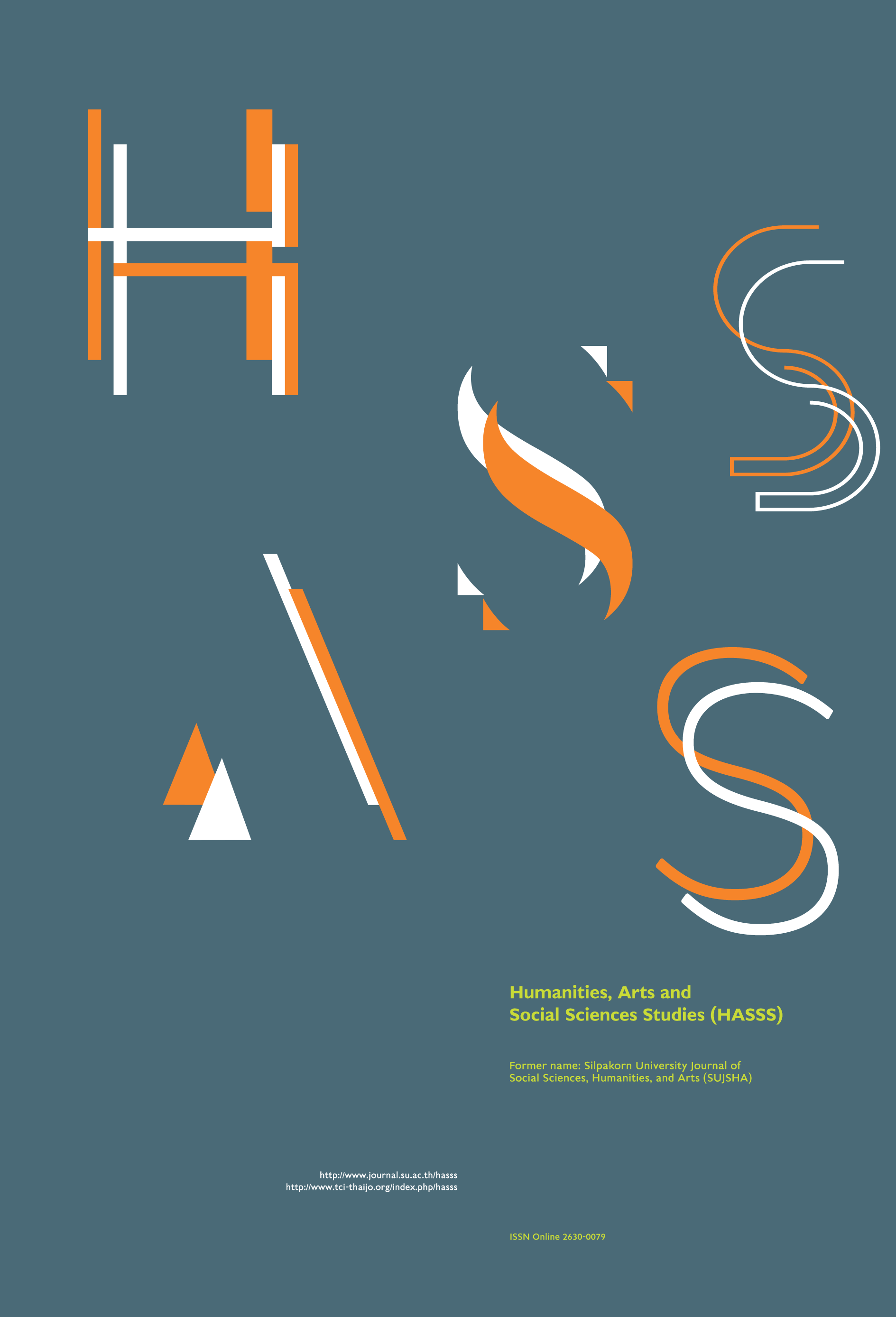Creative participatory learning activities for quality of life development of ethnic groups in Khlong Lan District, Kamphaeng Phet Province
Main Article Content
Abstract
Quality of life of people including ethnic minority groups plays an important role in country development. Therefore, this study aimed to promote creative participatory learning activities for developing quality of life of ethnic groups in Khlong Lan District, Kamphaeng Phet Province in Thailand. This study was conducted following a research and development method consisting of Phase I-assessing the needs of ethnic groups’ quality of life development, Phase II-creating and developing creative participatory learning activities, and Phase III-evaluating the results of using creative participatory learning activities. Sixty hill tribe people of six ethnic groups: Lisu, Karen, Hmong, Eiam, Lahu and Lua, and government officials were selected as samples for the study. Research tools comprised a structured interview form, a set of participatory learning activities for ethnic groups’ quality of life development, an evaluation form, and a questionnaire. Data were analyzed using Mean and Standard Deviation and modified priority needs index. The result of the needs assessment (Phase I) revealed that the modified priority needs index ranged between 0.12-0.33 and the top three needs and approaches to development were learning, occupation, and social relations; health and hygiene; and natural resources and environment respectively. Phase II resulted in a set of creative participatory learning activities for ethnic groups’ quality of life development, and consisted of ten activities aiming to develop five aspects; health; mind, value and belief; learning, occupation, and social relations; natural resources and environment; and human rights. The results of Phase III showed that the overall evaluation scores after using creative participatory learning activities were at the high level and the overall samples’ satisfaction scores toward creative participatory learning activities for ethnic groups’ quality of life development was also at the highest level.
Downloads
Article Details
All rights reserved. Apart from citations for the purposes of research, private study, or criticism and review,no part of this publication may be reproduced, stored or transmitted in any other form without prior written permission by the publisher.
References
Bunraksa, T. and Suwimonsathian, C. (2016). Management of community culture: wisdom in strengthening the security of the elderly, a case of Lahu communities in Mae Ai District, Chiang Mai Province. Burapha Arts Journal 19(1): 93-113. [in Thai]
Chantavanich, S. and Thaiyanan, W. (1996). Concepts and indicators of social development and quality of life of Thailand. In Development of Indicators Quality of Life and Thai Society, edited by Poungsomlee, A. and Ard-am, O., pp. 130-235. Bangkok: The Thailand Research Fund. [in Thai]
Cohen, J. M. and Uphoff, N. T. (1980). Participation's place in rural development: seeking clarity through specificity. World Development 8(3): 213-235.
Deelers, S. (2015). Creative thinking development process in the creative higher education institute. Veridian E-Journal, Silapakorn University 8(2): 1341-1360. [in Thai]
Jakae, O., Kuphan, B., Thipviset, V. and Lalin, T. (2019). The continuance new year tradition for promoting cultural tourism of Thai hill tribe ethnic groups Khlong Lan District in Kamphaeng Phet Province. Journal of Humanities and Social Sciences 25(3): 87-101. [in Thai]
Japao, S. (2017). A change in the quality of life of the Kachin ethnic group: a case study of Banmai Samakki, Mueangna Sub-district, Chiang Dao District, Chiang Mai Province. Journal of Buddhist Studies 8(2): 69-77. [in Thai]
Jesadaviroj, S. (2017). Learning process of Creative-Based Learning (CBL) in the CEE2205 (Creativity for Children Course). Kasetsart Educational Review 32(2): 1-8. [in Thai]
Jongwutiwes, N. (2007). Concepts of Guidelines for Community Development. Bangkok: Community Development Department, Ministry of Interior. [in Thai]
Kaewthep, K. (1995). Development of Community Culture: Human-Centered. Bangkok: Catholic Council of Thailand for Development. [in Thai]
Khlong Lan Subdistrict Municipality. (2016). Local Development Plan B.E. 2561-2564. [Online URL: https://www.khlonglanpattana.go.th/dnm_file/project/14021911_center.pdf] accessed on April 18, 2020. [in Thai]
Patumrath, S. (2005). Laws and Agreements Related to Tribal Rights in Thailand. Chiang Mai: Inter Mountain Peoples' Education and Culture in Thailand Association. [in Thai]
Pukdikiripriwan, P. (2016). Quality of Life of the People in Ban Saentor Community, village no. 11, Thapha Sub-district, Ko Kha District, Lampang Province. Master’s thesis. Thammasat University, Thailand. [in Thai]
Sukawat, B. (2015). Acculturation of Tai Khun Tribe: the Conciliation of Cultural Citizenship. Doctoral dissertation. Mahasarakham University, Thailand. [in Thai]
Tao-ngoen, S. (2016). The knowledge management of the language and cultural diversity of Phetchabun Province. Humanities and Social Sciences Journal, Ubon Ratchathani Rajabhat University 7(1): 39-53. [in Thai]
Vinijkul, R. (2016). Factors affecting community development: a case study from the people in Tambon Khlonglanpattana, Amphoe Khlong Lan, Kamphaeng Phet Province. Western University Research Journal of Humanities and Social Science 2(3): 58-64. [in Thai]
World Health Organization. (1997). WHOQQL Measuring Quality of Life. [Online URL: https://www.who.int/toolkits/whoqol] accessed on December 10, 2019.
Yimprasert, P. and Noichun, N. (2012). The approach of advancing the quality of life according to basic needs of the Chao Wat population, Ban Rai District, Uthai Thani Province. Nakhon Sawan Rajabhat University Graduate Studies Journal 7(18): 131-141. [in Thai]


